Coming Home
This morning I find myself sitting quietly, soaking in the pre-dawn calm and beauty of Seneca Lake in western New York. Its been over ten years since my last lake-side vacation and I sit in wonderment at how I feel so at home and at peace in the Finger Lakes. As I gently whittled away the late afternoon hours yesterday with my sons, fishing pole in hand, I realized how much of my early life had been centered on “lake life.” The innumerable summer weeks spent at my grandparent’s lake cottage. The summer camping vacations, lakeside, at any one of a number of beautiful lakes in the Adirondack Mountains. The annual canoe trips and fishing trips with my father and my brother. It is no wonder that taking a soak in the lake melts away the years, lightens my heart, and restores my soul.
Over the last two weeks, since my last post on my recovery from my riding accident, I have been thinking a lot about the balance between pushing forward and the need to rest, recover and reward oneself for one’s efforts. It may seem simple at first. Push forward until you achieve a success and then reward yourself. But, fear and anxiety are tricky playmates. I was exhilarated and relieved after my first post-accident ride on my youngster. As with facing any anxiety or fear, that first step to get back in the saddle is a huge one. What I seem to have had forgotten, despite more than two decades helping people with their anxiety, is that overcoming anxiety is not a “once and done” proposition. I have to admit that, as challenging as it was to get back on the first time, the second and third rides were more personally challenging than the first.
A funny thing about anxiety is that there is nothing more comforting than to make it go away and no better way to make it go away than to withdraw from what makes you anxious. Thinking about this in terms of riding, if I get myself all worked up to face the challenge of the first ride back and then reward myself with a good long break before the next ride, I run the risk of reinforcing the “taking a break” behavior and making the next ride all the more anxiety provoking. It’s like inadvertently teaching a horse to pull back by releasing the pressure while they are panicking. The challenge or the art of recovery, where anxiety is involved, is to understand that it is a process that takes time and requires balance between the challenge and the reward so that you are neither over-faced nor overly withdrawn or backed away.
So what does all this have to do with soaking in a lake or fishing in the Finger Lakes? When we have had a fall or accident so much of our focus gets placed on overcoming the aspects of our riding experience that causes us anxiety and angst that we run the risk of forgetting all of the other aspects of our horse experience that bring us joy, comfort, fun and a sense of accomplishment. Just like I had forgotten the peace, comfort and rejuvenation that I feel on a lake, I initially over-focused on riding this particular horse to the exclusion of all the other horse-related activities that bring me joy. So here is the updated plan:
- Continue regular rides on my young horse focusing on building his and my confidence while refining many of the good things we have accomplished along the way. In time, my apprehension will fade if I am consistent in my efforts.’
- Play more with my young horse on-line and at liberty. I love playing with this horse at liberty. We can build our relationship when I am not on his back. And, it is so much fun!
- Ride my other horses. Each of my horses present different joys and challenges. This helps build my confidence in the saddle while keeping me engaged and having fun.
- On occasion, do what I love with other’s horses that allow me to just enjoy the ride. I went for my first post-accident trail ride with the Loudoun Fairfax Hunt last Saturday. I am looking forward to hilltopping with my sons this fall on the experienced hunt horses from Over the Grass Farm.
- Spend more time in the barn taking in the smells and listening to my horses eat. Some times I forget to take my time and appreciate the simple things.
So, if you find yourself challenged with your own recovery, take the time to reflect on the parts of your horse experience that rejuvenate and restore you. Sprinkle your recovery efforts generously with opportunities to enjoy these experiences to reward, recharge and support yourself. In this way your recovery will be more than just the chore or work of recovery and overcoming fear, it may feel more like, well… coming home.

